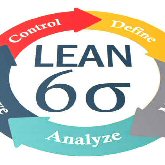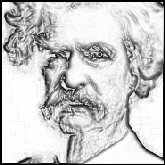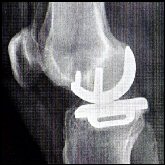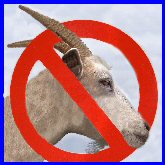 by Moises J Goldman & John Jonelis
by Moises J Goldman & John Jonelis
In the early 2000s, after the internet bubble burst, it became abundantly clear that the US needed a new competitive edge. A product management philosophy took hold, called Lean—Lean Development, Lean Manufacturing, Lean Planning, Lean Sigma, Lean Start-up. 2 Lean is a management philosophy that considers any part of the enterprise, which does not directly add value to the final objective, as superfluous—be it product development, customer service, or for that matter, the entire enterprise. It examines all processes and eliminates the ones that do not add value to the end objective. Lean is an attempted departure from the traditional way of doing business. It found favor in the US and, to one extent or another, became a dominant model. This is the second installment of a four-part article about managing creative enterprises.
Lean
In Lean Management, a project is broken into two phases. Phase 1 – Stealth Mode – represents the alpha version of a product. The nascent prototype is tested in the internal company environment. Further development leads to a beta version for which certain companies, by invitation, test the product before release to manufacturing. Phase 2 – Market Mode – represents the completion, approval, and release of an MVP—minimum viable product—which then goes through a correction phase that includes bug fixing. At the same time, a company will test features. This includes, by implication, changes to marketing plans, sales strategies, etc. (See Figure 2.)

Figure 2 – Lean Development Mode
The Lean Model does a superb job of describing the modern way of thinking about the product cycle, but the same thinking that governs the Traditional Model drives it. As before, it finds expression as a high-level sequence. It provides a manager no road map to improve a situation, and instead depends entirely on personal talent and resourcefulness to win the day.
Traditional vs. Lean
Lean presents certain points of emphasis that distinguish it, such as the MVP, but the irony is that when we compare the Lean Model to the Traditional Model, we find that they are basically the same.
- “Idea, Concept and Feasibility” in the Traditional Model are no different from “Objectives, Ideation, Definitions, and Mockups” in the Lean Model.
- “Preliminary Business Case, Definition, and Final Business Case” in the Traditional Model are not any different from “Proof of Concept and Alpha Version” in the Lean Model.
- “Development” and “Deployment” in the Traditional Model is the same as the “MVP and Releases X” in the Lean Model.
- “Initial Growth” in the Traditional Model is the same as “Release 2.0 and Releases 2.X” in the Lean Model.
- “Maturity” in the Traditional Model is no different from “Release 3.0 and Releases 3.X” in the Lean Model.
Obviously we could point out more similarities and the reader may ask what we have gained out of the so call Lean Model. The answer is actually quite profound: A significantly different perspective on the same thing.

New management models may induce radical change in various ways, but companies will always consist of people, their ideas, and a structure. A commercial concern can be described as the organized creation and distribution of products and services. That probably will not change. So we are dealing with the same basic material, but the point of view and emphasis makes the difference between one model and the next. The change in perspective can be highly valuable and the ramifications extreme. Compare for a moment some of what has already been discussed: Japan’s renaissance in the 1980s, JIT, Lean, and the Hollow Corporation. But we can do better.
The Current Environment
Today, automation is reversing the problem of cheap overseas labor and increasingly bringing manufacturing back to our shores. We are only at the beginning of this new cycle. Meanwhile, a new entrepreneurial economy is bursting forth. Design is moving to center stage. Our business culture has evolved and attitudes have re-aligned. In sharp contrast to the past, creative employees have finally gained the acceptance and respect they deserve for the crucial role they play in organizational success. The business climate is faster-paced, than ever—rapidly changing, and multicultural. Staunchly individualistic leaders backed by a computer savvy workforce characterize our high tech companies, and increasingly, our entrepreneurial ventures. It is important to appreciate that sequential charts of managerial jargon are no longer well received. Such things impose uniformity, and uniformity is anathema to today’s creative workforce. Under these circumstances, it is extremely challenging to manage product design using yesterday’s managerial paradigms.
Along with previous models, Lean has proven its worth. But once again, current conditions call for an entirely new point of view—a clear and simple model that works with creative organizations that have no patience with past modes of operation—a model that adapts to most every organization regardless of mission and organizational structure. We all seek efficiency and excellence in our design and manufacturing processes, and we emphasize these objectives more than we do any others. Today, for the release of any complex product, we need a new model that optimizes and controls efficiency and excellence.

The Controlled Design Management Model
At their root, all the models that have gone before are based on the same kind of thinking—the placing of categories in the right sequence. Now we will come at the problem from with a different set of criteria and a different mode of thought. We will lay aside any disputes between high-level models, and in fact adapt to most any sequential life cycle that an organization embraces.
The next article will describe this radically new way to manage creative organizations.
■
Continue to PART 3
Go back to PART 1
Download full paper (PDF)
.
References
- Deming, W. Edwards (1964) [1943]. Statistical Adjustment of Data. Dover. ISBN 0-486-64685-8. LCCN 64-24416. (1966) [1950].
Some Theory of Sampling. Dover. ISBN 0-486-64684-X. LCCN 66-30538.
- William Ouchi: “Theory Z” How American Business can meet the Japanese Challenge. Addison-Wesley Publishing Company, 1981
- Lean was originated by Eiji Toyoda and Taichi Ohno of Toyota Motors. Ohno, Taiichi (1988), Toyota Production System: Beyond Large-Scale Production, Productivity Press, ISBN 0-915299-14-3
- C. F., L. S. Shieh, Joint Automatic Control Conference, Michigan, p 454
- Shieh, L.S. and Goldman, M. J., 1974 I.E.E.E. Trans. Circuit Syst., 21, 341
- The Hollow Corporation, Anita Campbell, Small Business TRENDS (2012) https://smallbiztrends.com/2004/04/hollow-corporation.html
Graphics
Flow-charts by Moises Goldman and John Jonelis.
Graphics from MS Office.
About the Authors
 Dr. Moises J Goldman holds an MSEE and a PhD in Engineering Systems from UCLA, specializing in large-scale systems, process optimization, and product innovation. MBA from MIT Sloan, specializing in strategic planning and business development. His focus is on periods of challenge and change, including startup, growth and restructuring. Goldman served as CEO, COO, and CTO in diverse industries and developed business across the USA, Germany, Spain, Mexico, Dominican Republic, Jamaica, and Brazil, working with small firms as well as branded giants such as Lockheed, Rockwell, ATT, America Movil, GM, Ford, Scotia Bank, and HSBC. Sits on several boards where entrepreneurship and innovation are the primary goals. Consults to merging companies during the integration phase as well as startups, helping them become going concerns. Member of several advisory boards at MIT. Founding member of the TALENT program at IMSA. Dr. Goldman can be reached at Moises.Goldman@outlook.com
Dr. Moises J Goldman holds an MSEE and a PhD in Engineering Systems from UCLA, specializing in large-scale systems, process optimization, and product innovation. MBA from MIT Sloan, specializing in strategic planning and business development. His focus is on periods of challenge and change, including startup, growth and restructuring. Goldman served as CEO, COO, and CTO in diverse industries and developed business across the USA, Germany, Spain, Mexico, Dominican Republic, Jamaica, and Brazil, working with small firms as well as branded giants such as Lockheed, Rockwell, ATT, America Movil, GM, Ford, Scotia Bank, and HSBC. Sits on several boards where entrepreneurship and innovation are the primary goals. Consults to merging companies during the integration phase as well as startups, helping them become going concerns. Member of several advisory boards at MIT. Founding member of the TALENT program at IMSA. Dr. Goldman can be reached at Moises.Goldman@outlook.com
 John Jonelis patented seven products and developed dozens more in the field of air pollution control. Created the Revelation suite of trading algorithms. Private equity investor. Artist. Writer, and publisher of Chicago Venture Magazine and News From Heartland—the Journal of the Heartland Angels. Author of the novel, The Gamemaker’s Father. Illinois Wesleyan BFA, 1974. Kellogg MBA 1989.
John Jonelis patented seven products and developed dozens more in the field of air pollution control. Created the Revelation suite of trading algorithms. Private equity investor. Artist. Writer, and publisher of Chicago Venture Magazine and News From Heartland—the Journal of the Heartland Angels. Author of the novel, The Gamemaker’s Father. Illinois Wesleyan BFA, 1974. Kellogg MBA 1989.
Copyright © 2019 Moises Goldman & John Jonelis. All rights reserved. Quotation with attribution is permitted for educational purposes.
Chicago Venture Magazine is a publication of Nathaniel Press www.ChicagoVentureMagazine.com Comments and re-posts in full or in part are welcomed and encouraged if accompanied by attribution and a web link. This is not investment advice. We do not guarantee accuracy. Please perform your own due diligence. It’s not our fault if you lose money..
.
.







































































































































































Pingback: CONTROLLED DESIGN MANAGEMENT – Part 1 | Chicago Venture Magazine